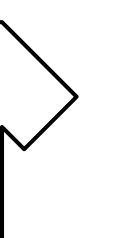UR Namur
| Pełna nazwa | Union Royale Namur – Fosses-La-Ville |
|---|---|
| Przydomek | Les Merles (Kosy) |
| Barwy |
|
| Data założenia | 1905 |
| Liga | Division 2 |
| Państwo | |
| Stadion | Stade communal des Bas-Prés, Namur |
| Prezes | Christophe Graulus |
| Trener | Zoran Bojović |
| Strona internetowa | |
Union Royale Namur – Fosses-La-Ville w skrócie UR Namur – belgijski klub piłkarski, grający w czwartej lidze belgijskiej, mający siedzibę w mieście Namur.
Historia
Klub został założony w 1905 roku. W swojej historii klub spędził 14 sezonów w drugiej lidze belgijskiej i grał w niej w latach 1945-1950, 1960-1967 i 2007-2009. W trzeciej lidze spędził 52 sezony. W latach 1989-1996 klub nosił nazwę RFC Namur. W 2017 roku przyjął nazwę Union Royale Namur – Fosses-La-Ville po fuzji z Racingiem FC Fosses[1].
Stadion
Swoje domowe mecze klub rozgrywa na stadionie o nazwie Stade communal des Bas-Prés, położonym w mieście Namur. Stadion może pomieścić 3500 widzów[2].
Sukcesy
- III liga:
- mistrzostwo (3): 1944, 1952, 1960
Reprezentanci kraju grający w klubie
Stan na listopad 2021[3][4][5]
|
|
Przypisy
- ↑ Historie du club (fr.). Oficjalna strona klubu. [dostęp 2021-11-29].
- ↑ Stade Communal des Bas-Prés, [w:] baza Soccerway (stadiony) [online] [dostęp 2021-11-29].
- ↑ RFC Namur (ang.). National Football Teams. [dostęp 2021-11-29].
- ↑ UR Namur (ang.). National Football Teams. [dostęp 2021-11-29].
- ↑ UR Namur Fosses-La-Ville (ang.). National Football Teams. [dostęp 2021-11-29].
Media użyte na tej stronie
Pictograms of Olympic sports - Football. This is unofficial sample picture. Images of official Olympic pictograms for 1948 Summer Olympics and all Summer Olympics since 1964 can be found in corresponding Official Reports.
Football kit template socks
The national flag of the Democratic Republic of the Congo. Created according to the 2006 constitution : Son emblème est le drapeau bleu ciel, orné d’une étoile jaune dans le coin supérieur gauche et traversé en biais d’une bande rouge finement encadrée de jaune. (Its symbol is a sky blue flag, decorated with a yellow star in the upper left corner and crossed in the diagonal by a red strip with thin yellow borders) It seems to be identical, except for a lighter field hue, to the 1966–1971 flag.
The national and official state flag of Haiti; arms obtained from http://www.webchantier.com/. The civil flag can be found at here.
Ulster Banner is a heraldic banner taken from the former coat of arms of Northern Ireland. It was used by the Northern Ireland government in 1953-1973 with Edwardian crown since coronation of Queen Elizabeth II, based earlier design with Tudor Crown from 1924. Otherwise known as the Ulster Flag, Red Hand of Ulster Flag, Red Hand Flag.
Ulster Banner is a heraldic banner taken from the former coat of arms of Northern Ireland. It was used by the Northern Ireland government in 1953-1973 with Edwardian crown since coronation of Queen Elizabeth II, based earlier design with Tudor Crown from 1924. Otherwise known as the Ulster Flag, Red Hand of Ulster Flag, Red Hand Flag.
Flag of the Socialist Federal Republic of Yugoslavia (1946-1992).
The design (blazon) is defined in Article 4 of the Constitution for the Republic of Yugoslavia (1946). [1]
Flag of the Socialist Federal Republic of Yugoslavia (1946-1992).
The design (blazon) is defined in Article 4 of the Constitution for the Republic of Yugoslavia (1946). [1]
Flag of Mauritania, adopted in 2017. The National Assembly added red stripes to the top and bottom edges to represent “the blood shed by the martyrs of independence”.
Please do not replace the simplified code by a version created with Inkscape or another vector graphics editor❗
The proportions of this flag are 3:2; however, there is no official definition for the correct proportions and also 5:3 is widely used.
Flag of Rwanda. The flag ratio is 2:3 with the stripes being 2:1:1. Colors are the following officially: Pantone 299 C 2X (blue), RAL 6029 (green), RAL 1023 (yellow) and RAL 1003 (golden yellow). (As of 03/08/2010, the only color used is the Pantone 299 C, which is from here. The rest of the colors are RAL shades from here.)
Flag of the Ivory Coast, written by Jon Harald Søby, modified by Zscout370. The colors match to what is reported at http://fotw.vexillum.com/flags/ci.html.


























